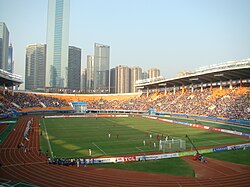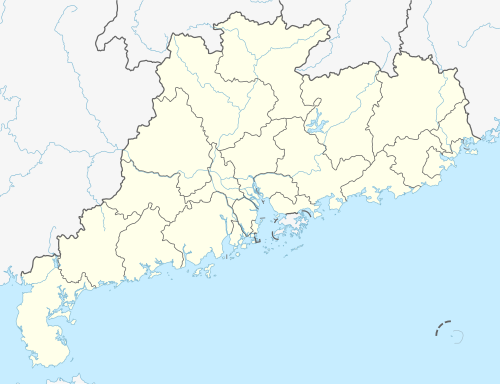| 1st FIFA World Championship for Women's Football for the M&M's Cup | |
|---|---|
 Official logo | |
| Tournament details | |
| Host country | China |
| Dates | 16–30 November |
| Teams | 12 (from 6 confederations) |
| Venue | 6 (in 4 host cities) |
| Final positions | |
| Champions | |
| Runners-up | |
| Third place | |
| Fourth place | |
| Tournament statistics | |
| Matches played | 26 |
| Goals scored | 99 (3.81 per match) |
| Attendance | 510,000 (19,615 per match) |
| Top scorer | |
| Best player | |
| Fair play award | |
1995 → | |
The 1991 FIFA Women's World Cup was the first FIFA Women's World Cup, the world championship for women's national football teams. It took place in Guangdong, China from 16 to 30 November 1991. FIFA, football's international governing body selected China as host nation as Guangdong had hosted a prototype world championship three years earlier, the 1988 FIFA Women's Invitation Tournament. Matches were played in the provincial capital, Guangzhou, as well as in Foshan, Jiangmen and Zhongshan. The competition was sponsored by Mars, Incorporated, maker of M&M's candy. With FIFA still reluctant to bestow their "World Cup" brand, the tournament was officially known as the 1st FIFA World Championship for Women's Football for the M&M's Cup. [1]
Contents
- Venues
- Participating teams and officials
- Qualification
- Squads
- Match officials
- Tournament review
- Draw
- Group stage
- Group A
- Group B
- Group C
- Ranking of third-placed teams
- Knockout stage
- Bracket
- Quarter-finals
- Semi-finals
- Third place play-off
- Final
- Awards
- Statistics
- Goalscorers
- Assists
- Tournament ranking
- See also
- References
- External links
It was won by the United States, [2] whose captain April Heinrichs formed a forward line dubbed the "Triple-Edged Sword" with Carin Jennings and Michelle Akers. Jennings was named player of the tournament while Akers's ten goals won the Golden Boot. [3] The United States defeated Norway 2–1 in the final in front of a crowd of 63,000 people at Guangzhou's Tianhe Stadium. [4] Total attendance for the tournament was 510,000, an average per match of 19,615. In the opening match at the same stadium, Norway was defeated 4–0 by hosts China. Chinese defender Ma Li scored the first goal in Women's World Cup history, while goalkeeper Zhong Honglian, also of China, posted the first official clean sheet in the tournament.
The 12 qualified teams were divided into three groups of four (A to C). The top two teams and the two best third-place finishers from the three groups advanced to the knockout round of eight teams. For only this first edition of the Women's World Cup, all matches lasted only 80 minutes, instead of the typical 90, and two points were awarded for a win (both of which would change in 1995). [5]


